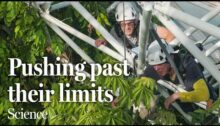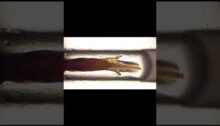China’s clean energy infrastructure
From Science Magazine. In 2025, renewables helped bring the growth of greenhouse emissions to a virtual standstill in China and put a global carbon peak within reach. Tim Appenzeller, Science’s News Editor, and Li Shuo, director of the China Climate Hub at the Asia Society Policy Institute, explain. #ScienceTok #STEMTok Read more: https://scim.ag/4aCV0fJ CREDITS: (FOOTAGE)…

























